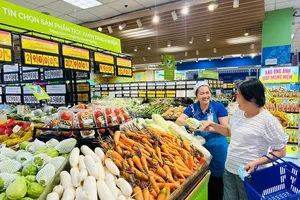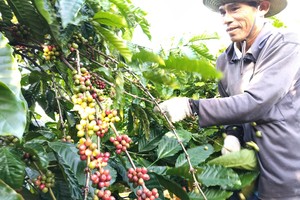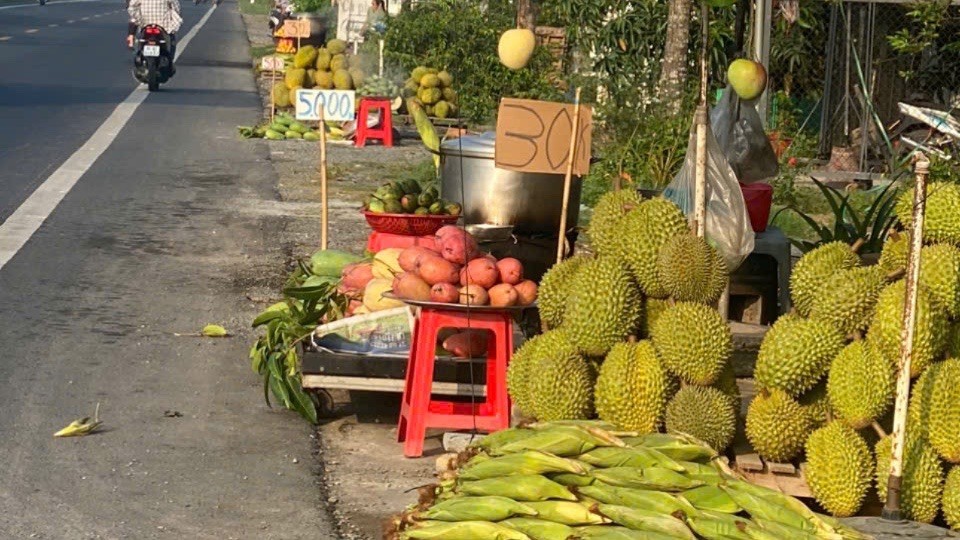
As of May 1, Ri6 durian was priced at only VND25,000 per kilogram at farms in the Mekong Delta—a drop of VND5,000-VND15,000 per kilogram compared to a month ago. However, what concerns growers even more than the low prices is the absence of traders willing to buy.
Faced with this situation, many farmers in Phong Dien District (Can Tho City) and Chau Thanh A District (Hau Giang Province) have begun bringing their durians directly to the edge of National Highway 61C—which connects Can Tho and Vi Thanh—to sell them by the roadside.
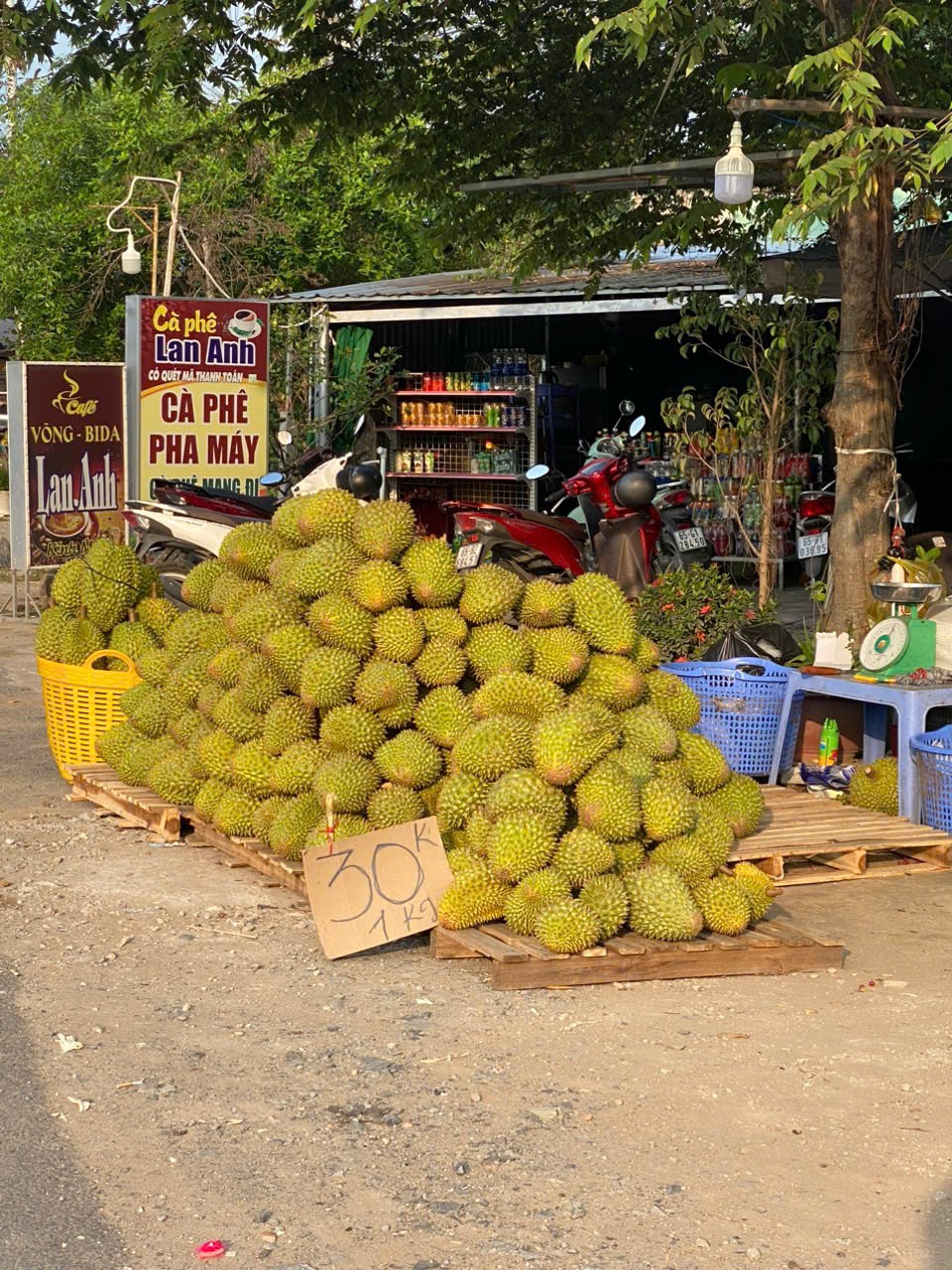
Roadside durians are fetching higher prices than those sold at the farm. The Ri6 variety is currently going for between VND30,000 and VND60,000 per kilogram, depending on quality. According to Nguyen Van Muoi, a farmer in Phong Dien, the oversupply of durian and the lack of buyers have forced families to take to the streets to offload their harvest however they can. This practice has become increasingly common in Can Tho, Vinh Long, and other provinces in the Mekong Delta.
Ms. Nguyen Thi Giang, Deputy Director of the Department of Agriculture and Environment of Hau Giang Province, noted that the durian market is facing significant challenges—particularly in terms of quality control, pricing, and demand. Prices have plunged sharply, driven by expanding production areas that have led to a surge in supply, while importers in several countries are tightening quality requirements.
The agriculture and environment sector advises farmers to adhere to food safety standards required by importing countries or aligned with international benchmarks, to gain access to more demanding markets and expand their reach. Investment in modern agricultural technology and techniques is also encouraged to enhance product quality.
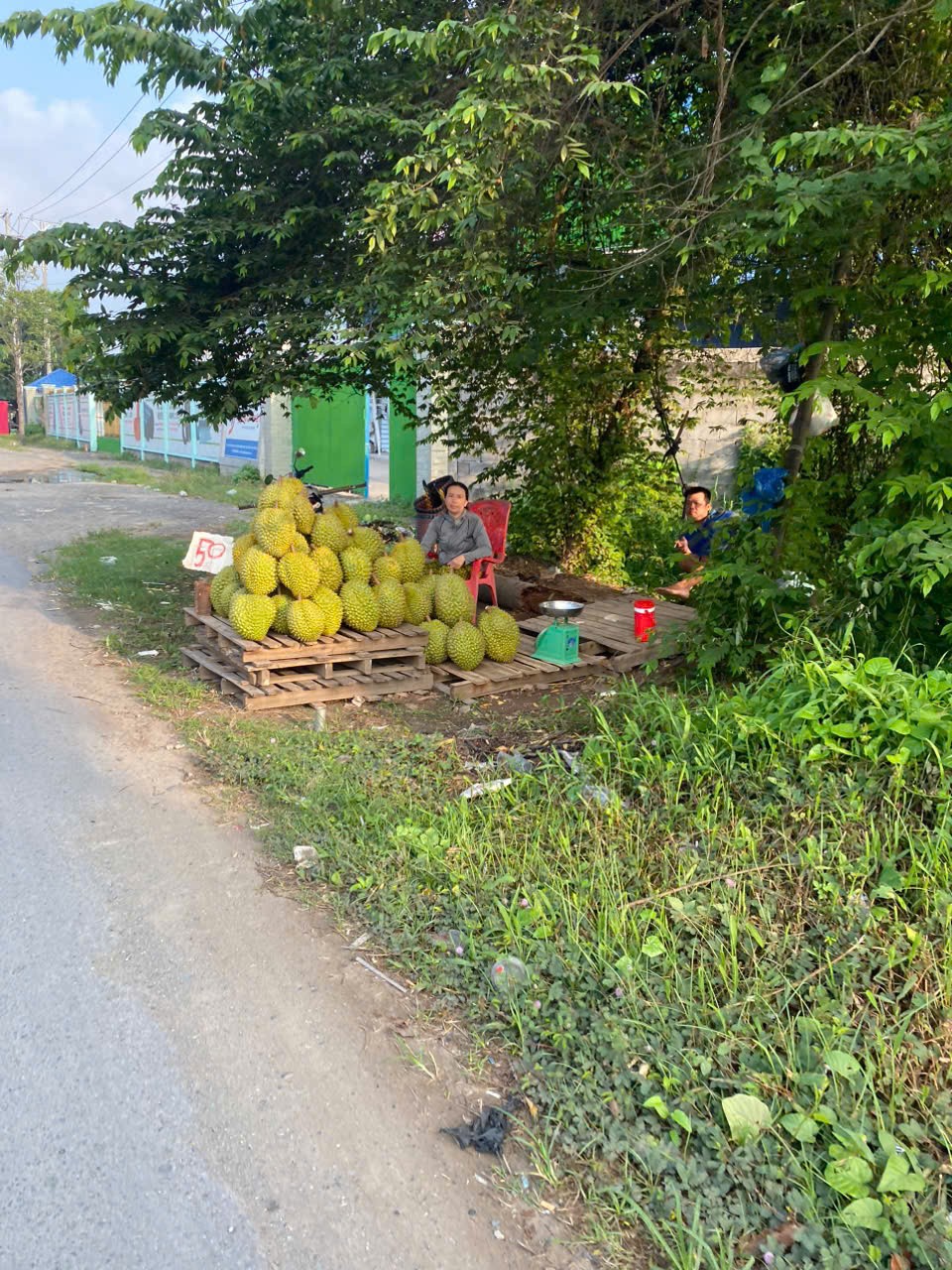
Enterprises are urged to invest in durian processing to add value, while cooperatives are encouraged to form partnerships between farmers and businesses, creating more resilient supply chains that help stabilize prices and improve market efficiency. Both farmers and enterprises must prioritize quality, diversify durian-based products, and explore new markets to navigate this difficult period.











